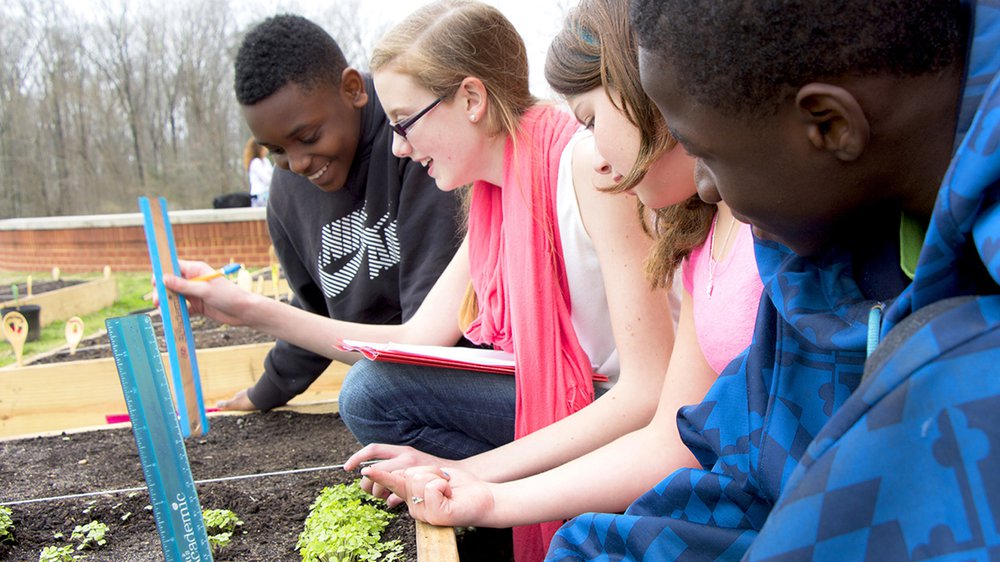I am getting ready to begin my third year as the Technology Explorations Teacher at Allegheny Valley School District. As I have worked to establish my curriculum, one of the topics that I find myself incorporating more and more is digital citizenship. The U.S. Institute of Diplomacy and Human Rights defines digital citizenship as the understanding and appropriate use of digital technology.
This is an increasingly important topic as, according to research conducted by Common Sense Media, children aged eight and under use an average of 2.5 hours of screen time per day. That screen time jumps to over 7 hours of use by the time kids reach high school. Given these statistics, it is important for educators to include responsible online behavior in our teachings.
It is no longer realistic to expect students to stay away from the Internet and social media – nor do we want them to stay away! Using digital tools is a critical skill for learning and life. Educators instead must teach them how to make smart and safe choices while navigating online spaces. Fortunately, as the importance of teaching digital citizenship has grown, so has the number of available resources on the subject. Here are a handful of my favorite free resources:
Digital Citizen Passport
One of my favorite activities to introduce the topic in my class is the Digital Citizen Passport from the STEM Careers Coalition, a network alliance of industries and non-profit organizations partnered with Discovery Education to solve critical gaps in diverse representation in the STEM professional workforce. With this free resource, students create passports in which they develop a safe username, list their favorite activities to do on their devices, and come up with a promise to ensure that they stay safe online. One great aspect of this activity is that it can be easily adapted for a wide age range of subjects and is aligned to the ISTE Standards for Students.
In my technology classroom, I use it with 2nd graders as they make the shift from tablets to Chromebooks. After they create their passports, I laminate them and return them for students to keep with them as a tactile reminder of their pledge to responsible digital citizenship. This fun introductory activity also lends itself well to further discussions on topics. I use this activity to prompt discussions such as how to create a safe username free of private information and what to do if they spot bullying or other unsafe behavior online.
Common Sense Education
Another great source of digital citizenship curriculum is Common Sense Education, a subsection of Common Sense Media. It offers free digital citizenship lessons for grades K-12, including lesson plans, informational slides, videos, and hands-on activities that align with a wide variety of standards such as from ISTE and CASEL.
I introduce this curriculum in kindergarten, where students meet characters that help them reflect on the principles of digital citizenship in an age-appropriate way. This resource ties the fundamentals of digital safety to different body parts to better resonate with children; for instance, the character Feet teaches the concept and importance of digital footprints, and Legs explores how to stand up against cyberbullying. Students watch a video on a variety of digital citizenship topics, participate in a class discussion based on a focus question, and complete a brief writing activity as a whole group. This resource is a great way to get young students to think along the lines of safe and responsible online behavior in small increments.
Be Internet Awesome
Be Internet Awesome from Google is another useful tool for teaching digital safety and literacy. With five units that delve into how to be internet smart, strong, alert, kind, and brave, students are exposed to a wide array of situations and best online practices. Each unit has around seven lessons equipped with printable worksheets, vocabulary lists, and activities. Topics range from practicing safe searches to understanding internet privacy and security to being kind while online. These lesson plans meet ISTE Standards for Students and can be adapted for use in 2nd grade and up.
In addition to the classroom materials, educators and students alike will enjoy Interland, an online adventure-based game that explores Google’s five fundamentals of internet safety. I like this program because the game itself is engaging with fun graphics and music while still managing to emphasize the importance of practicing digital safety. At the end of each section, there is a quiz to assess what the students learned. This provides educators with immediate feedback on the student’s learning and seamlessly connects back to the materials and units.
As online presence continues to evolve and expand, it is important to spread awareness of the bounty of resources available to teach students how to navigate the digital world safely. Just as we teach students how to interact with each other and make responsible choices in the “real world,” it is essential that we do the same for virtual spaces.
These free resources from Discovery Education, Common Sense Education, and Google are great starting points for educators to begin creating their own curriculum on teaching students of any age to become responsible self-advocates online.
About the Author
Alexis Teitelbaum is the Technology Explorations teacher for Allegheny Valley School District.











